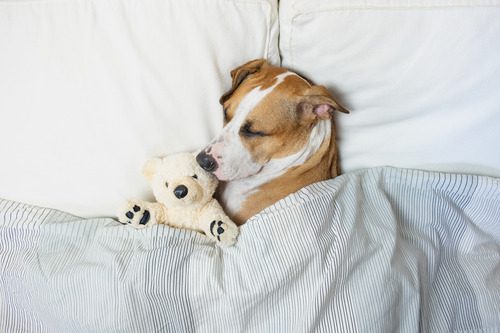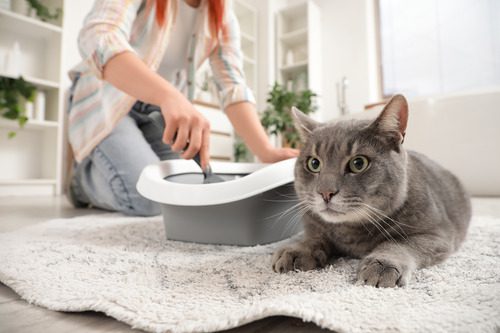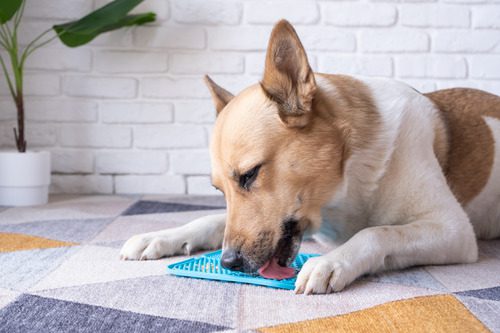Do Dogs Dream When Sleeping?
Have you ever watched your dog twitch their paws, paddle the air, or quietly whimper while fast asleep? These moments can be funny, endearing, and even a little mysterious. It’s easy to wonder: do dogs dream the way we do? Pet owners often assume those sleepy movements mean their dog is chasing something in their dreams, but is that really what’s happening? Below, we’ll explore what science says about canine dreaming, how sleep patterns in dogs compare to ours, and what your dog’s dreams might reveal about their waking life. If you’ve ever been curious about what goes on in your dog’s mind while they snooze, you’re in the right place.

How Do Dogs Sleep?
Dogs experience several sleep stages, just like people do. Understanding how they sleep is the first step to answering the question: do dogs dream?
The Stages of Canine Sleep
Dogs cycle through two main sleep stages: slow-wave sleep (SWS) and rapid eye movement (REM) sleep. Slow-wave sleep is the lighter stage, when breathing slows and the body begins to relax. REM sleep is the deeper, more active stage. This is when most dreaming occurs in both humans and animals. During REM, brain activity increases, eyes dart behind closed lids, and the body may twitch or shift.
Puppies, senior dogs, and small breeds tend to spend more time in REM sleep than large adult dogs. That’s why younger dogs often show more movement and vocalization while sleeping, they’re likely having vivid dreams more frequently.
How Long Do Dogs Sleep?
Dogs sleep much more than we do: an average of 12 to 14 hours per day. Puppies and older dogs may need even more rest. This gives them plenty of opportunities to cycle through sleep stages and, potentially, to dream.
What Science Tells Us About Dog Dreams
Research into animal sleep patterns offers strong clues that dogs do, in fact, dream. But how do we know this?
Animal Studies and Dream Behavior
In a well-known study at MIT, researchers studied rats navigating a maze and recorded their brain activity. Later, while the rats slept, scientists observed similar brain patterns, indicating that the rats were dreaming about the maze. Although the study focused on rats, it supports the idea that animals with complex brains can replay daily events in their dreams. Dogs, with their strong memory and emotional centers, likely experience the same. Further research from Harvard and the Sleep Laboratory at MIT suggests that dogs not only dream but may dream about their daily experiences, such as playing fetch, going for a walk, or spending time with their favorite people.
What Dogs Might Dream About
Although we can’t ask them directly, experts believe dogs dream about things they do while awake. A dog who runs, plays, or trains frequently may “act out” those experiences in their sleep. If your dog kicks their legs or growls softly while napping, it could reflect a dream involving action or emotion.
Common Dream Behaviors in Dogs
When asking “do dogs dream,” many pet owners also want to understand whether their pet’s behavior during sleep is normal. Here’s what to look for.
Movements and Sounds
Twitching, kicking, or tail flicking during sleep are often signs that a dog is in REM sleep. Vocalizations such as quiet barking, whining, or even soft howls can occur as well. These signs are generally harmless and are considered a normal part of dreaming.
Eye and Ear Activity
You might notice rapid eye movement beneath closed lids or slight ear flicks. These are physical indicators that your dog is deeply asleep and possibly experiencing a dream. Try not to wake them if they’re showing these signs. They’re getting valuable rest and likely enjoying some mental stimulation, too.
Is It Ever a Cause for Concern?
In rare cases, certain sleep behaviors can indicate underlying issues, but these are typically very different from typical dream activity.
When Sleep Behavior Looks Unusual
If your dog thrashes, cries out, or seems distressed during sleep on a regular basis, it’s worth discussing with your veterinarian. Similarly, if they appear confused or disoriented upon waking, they might be experiencing something beyond normal dreaming. While these cases are uncommon, they can point to neurological issues, sleep disorders, or anxiety.
Safe Sleep Environment Matters
To help your dog enjoy restful, dream-filled sleep, provide a safe, comfortable space. A supportive bed, low noise levels, and a consistent routine can help them relax fully into deeper sleep stages.
Do Dogs Have Nightmares?
Another question that often comes up with “do dogs dream” is whether those dreams are always pleasant.
Interpreting Whimpers or Startled Waking
Dogs can have bad dreams just like people do. If your dog wakes up suddenly with a jolt or appears unsettled after sleeping, they might have experienced a nightmare. This doesn’t necessarily indicate a larger issue. It could just be a reflection of something mildly stressful in their day. It’s best to let your dog wake up on their own unless they appear genuinely distressed.
Comforting a Dog After a Nightmare
If your dog seems shaken or nervous after sleep, use a calm, soothing voice and gentle touch to reassure them. Avoid startling them awake, as this can create confusion and may escalate anxiety. Most dogs settle down quickly and return to sleep once they feel secure again.
What Factors Affect Dream Frequency?
Not every dog dreams the same way or with the same frequency. Several factors can influence how often and how vividly a dog may dream.
Age and Brain Development
Puppies are known to dream more frequently than adult dogs. Their brains are rapidly developing, and they’re absorbing large amounts of information during their early life stages. Dreaming may help them process and store these experiences.
Activity Levels and Daily Routine
Dogs that stay mentally and physically active during the day may have richer and more frequent dreams. Activities like training, playtime, and social interaction provide plenty of material for their brains to “review” while sleeping.
Breed Differences
Some studies suggest that smaller breeds may experience more REM cycles in a typical night than larger breeds. This could mean that breeds like Chihuahuas or Dachshunds dream more often or more vividly than Great Danes or Saint Bernards.
Why Your Dog’s Dreams Matter
Dreams may be more than just interesting. They may play an important role in your dog’s overall well-being.
Emotional and Cognitive Health
Much like in humans, dreaming likely helps dogs process emotions and experiences. Sleep and dreaming may support memory, learning, and emotional balance. Dogs that sleep well tend to be more alert, adaptable, and content during the day.
Strengthening the Bond Between You and Your Dog
By recognizing and respecting your dog’s sleep needs including their dreaming, you contribute to a sense of security and trust. Letting your dog rest uninterrupted, and observing their sleep patterns, can give you a deeper understanding of their habits, needs, and moods.
Every Dream Has a Tail to Tell
Whether they’re reliving a fun walk, practicing tricks, or processing the excitement of seeing a familiar face, dogs most likely do dream just like we do. Next time you notice your pup softly barking in their sleep or paddling their legs, know that they may be immersed in a vivid replay of their day. These dream cycles are a healthy, natural part of canine sleep and one more window into the amazing world of your dog’s mind.
If you ever have questions about your dog’s sleeping habits or notice anything unusual, reach out to the team at Best Friends Veterinary Hospital. We’re happy to help you understand your pet’s behavior and support their lifelong comfort and health. Call one of our locations or request an appointment online today.
Recent Posts
About Best Friends Veterinary Hospital
Our veterinarians and staff warmly welcome dogs, cats, and a variety of exotic pets as patients here at our animal hospital, and we offer a host of services to give your unique family member a lifetime of excellent care.




